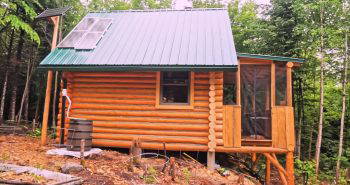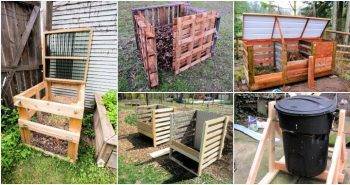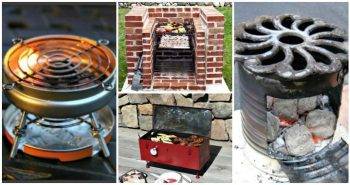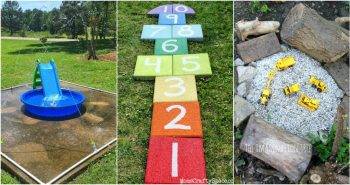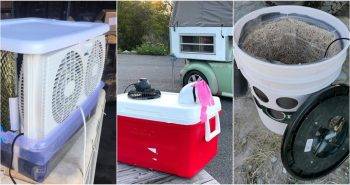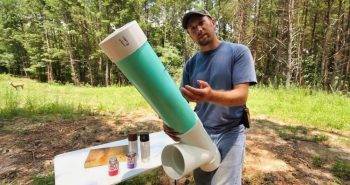As someone who enjoys the coziness of a fireplace during winter, the need for a constant supply of firewood led me to look for efficient and safer methods to prepare my kindling. This realization came after several close calls and realizing the potential dangers involved with traditional methods. From this experience, I intend to share a step-by-step guide on building a DIY log splitter that's both cost-effective and safe.
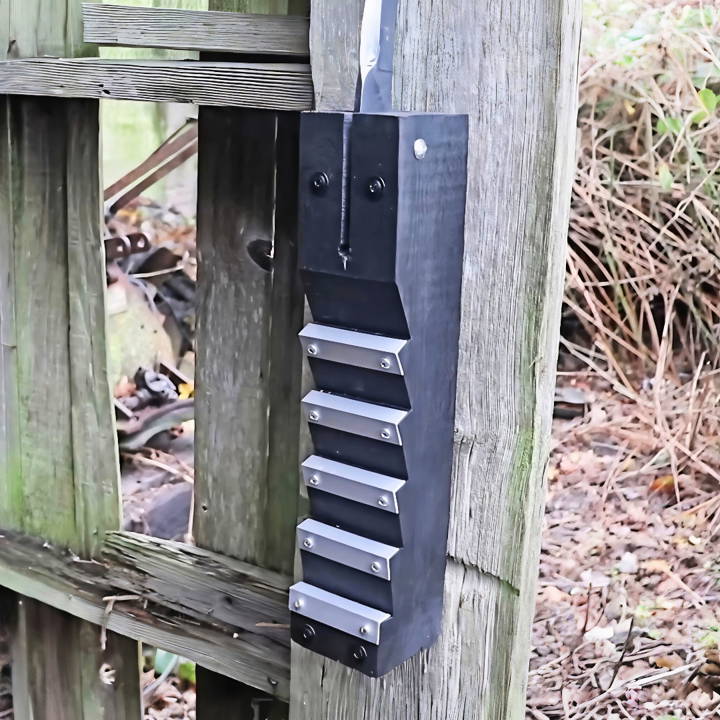
Understanding the Need
Cutting small pieces of firewood can be dangerous and inefficient with just an axe or saw, especially as the pieces get smaller and refuse to stand on their own. A homeade DIY log splitter, built with simple materials and basic tools, offers a safe and quick alternative. This project doesn't require intricate skills or expensive tools but rather a good understanding of leverage and basic construction techniques.
Materials Required:
- 4x4 Timber: This acts as the base of our log splitter. The solidity and size make it a perfect fulcrum and stable base to work with.
- Mild Steel Bar (35mm x 6mm): Essential for the cutting arm due to its durability and ability to be sharpened into a blade.
- Aluminum Angle: To reinforce the front of each step on the timber, giving it more durability and resistance against the splitting pressure.
- Assorted Screws: For assembling and reinforcing parts of the splitter to ensure longevity and safety.
- Tools (Saw, Drill, Angle Grinder): Necessary for cutting and assembling the components of the log splitter.
Step by Step Instructions
Learn how to build a DIY log splitter with our step-by-step guide from design to testing and usage. Perfect for all your log-splitting needs.
Step 1: Designing Your Log Splitter
Start by sketching your idea on paper before moving to a cardboard model. This prototype helps visualize the final product and aids in making necessary adjustments early in the design process.
Understanding Leverage:
The design revolves around building a lever mechanism that amplifies your force when splitting logs. Ensure the cutting arm (mild steel bar) is of the right length to provide sufficient leverage without requiring excessive force.
Step 2: Constructing the Base
Cut your 4x4 timber according to the size of logs you generally split. For most, a length accommodating logs of up to 12 inches works well, providing a versatile and functional range.
Crafting the Steps:
- Design Sawtooth Steps: Angle each step towards the 'sweet spot', where you'll exert pressure with the cutting arm. This design ensures efficiency in splitting logs of varying sizes.
- Reinforcement with Aluminum Angle: This prevents the timber from wearing down or splitting under pressure. Attach the aluminum angle to the front of each step using screws, enhancing the durability of the contact points.
Step 3: Preparing the Cutting Arm
- Cutting the Steel Bar: Adjust its length to about 600mm for optimal leverage.
- Sharpening: Using an angle grinder, carefully build a blade on one edge of the bar. Remember safety first - always wear eye protection and gloves.
- Drilling for Pivot: Drill a hole on one end of the bar. This will be used to attach it to the timber base, allowing it to pivot.
Step 4: Assembly
- Pivot Point: Drill a corresponding hole in the timber where the steel bar will be attached. Use a bolt and nut to secure it, ensuring it pivots freely.
- Handle Creation: For comfort, attach a wooden handle across the non-cutting end of the steel bar. This distributes pressure more evenly across your hand, reducing discomfort during use.
Step 5: Testing and Adjustment
Place a log on the base and press down on the arm. The initial tests will help you understand the amount of force needed and whether any adjustments are required for efficiency.
Using Your DIY Log Splitter
Position the splitter in a convenient and safe spot. Using it is straightforward: Place a log against the step and push down on the lever. The leverage provided by the steel bar will split the wood safely and efficiently.
Safety Tips
- Always wear safety gloves to protect your hands.
- Secure the log splitter firmly to a base or the ground to prevent movement during use.
- Keep your fingers away from the cutting area when operating the splitter.
Performance Optimization
Optimizing the performance of your DIY log splitter involves making sure it operates efficiently and effectively. Here are some tips to help you get the best out of your machine:
- Choose the Right Power Source: Your log splitter's power source can significantly affect its performance. For most home users, an electric motor is sufficient and more environmentally friendly than a gas engine. If you require more power, consider a gas engine, but ensure it's well-maintained to prevent performance issues.
- Maintain Hydraulic Fluid Levels: Your log splitter's hydraulic fluid is its lifeblood. Check the fluid levels regularly and top up if necessary. Use the type of fluid recommended by the manufacturer to avoid damage and ensure optimal performance.
- Sharpen the Splitting Wedge: A dull wedge can slow down your work. Keep the wedge sharp for a clean and efficient split. You can sharpen it yourself using a file or grinder, but always follow safety guidelines.
- Use a Filter on the Hydraulic System: To prevent contaminants from clogging your hydraulic system, install a filter. This will keep the fluid clean and the system running smoothly.
- Regularly Check for Leaks: Inspect the hydraulic hoses and connections for leaks, which can lead to a loss of pressure and reduced splitting force. Tighten connections and replace worn hoses as needed.
- Adjust the Cycle Time: If your log splitter allows, adjust the cycle time to match the size of the wood you're splitting. Shorter cycles for smaller logs can save time and energy.
- Keep the Splitter Clean: After each use, clean any debris from the machine. This prevents build-up that can hinder the splitter's movement and affect its performance.
By following these tips, you can ensure your DIY log splitter runs at peak performance, saving you time and effort while splitting wood.
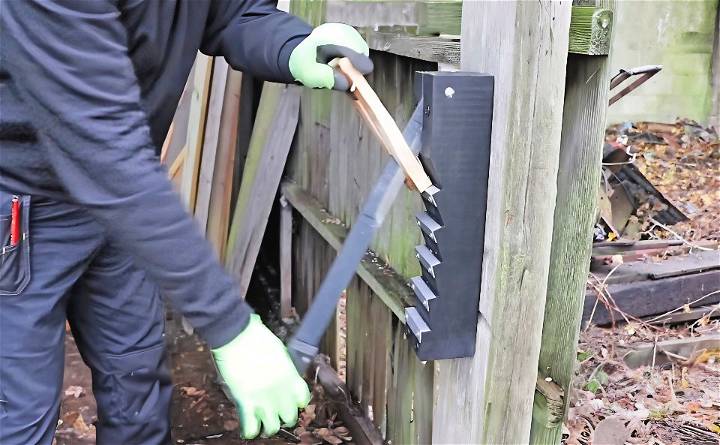
Maintenance and Troubleshooting
Maintaining your DIY log splitter is crucial for its longevity and efficiency. Here's a straightforward guide to help you keep your log splitter in top condition and troubleshoot common issues:
Regular Maintenance Checks:
- Inspect the Hydraulic System: Regularly check the hydraulic fluid level and quality. If the fluid is dirty or low, replace or top it up as needed.
- Examine Hoses and Fittings: Look for signs of wear or damage on the hydraulic hoses and fittings. Replace any that are worn or leaking.
- Clean the Splitter: After each use, remove any wood debris from the machine. This helps prevent mechanical jams and maintains efficiency.
Troubleshooting Common Issues:
- Splitter Won't Start:
- Check the power source to ensure it's connected and functioning.
- For gas-powered splitters, verify that there's enough fuel and that the engine oil level is adequate.
- Low Splitting Force:
- Ensure the hydraulic fluid is at the correct level and pressure.
- Bleed the air from the hydraulic system if necessary.
- Hydraulic Fluid Leaks:
- Identify the source of the leak, which is often at hose connections or seals.
- Tighten connections or replace damaged seals and hoses.
- Wedge Not Moving:
- Check for obstructions around the wedge and remove any debris.
- Inspect the hydraulic cylinder and pump for malfunctions.
Preventative Tips:
- Use Quality Hydraulic Fluid: Invest in high-quality hydraulic fluid to reduce the risk of contamination and wear.
- Store Properly: When not in use, store your log splitter in a dry, covered area to protect it from the elements.
- Follow Manufacturer's Guidelines: Adhere to the maintenance schedule recommended by the log splitter's manufacturer.
By following these maintenance and troubleshooting steps, you can ensure your DIY log splitter operates safely and effectively for years to come. Regular care and addressing problems promptly will save you time and money in the long run.
Safety Measures and Best Practices
When building a DIY log splitter, safety is paramount. Here's a guide to help you understand and implement the best safety measures:
- Wear Protective Gear: Always wear the appropriate safety equipment, including goggles, gloves, and ear protection. This will help protect you from flying debris, hydraulic fluid, and loud noise.
- Read the Manual: Before you start building or using your log splitter, thoroughly read the instruction manual. It contains essential safety information specific to your model.
- Work in a Clear Area: Keep your work area free of clutter. A clean space minimizes the risk of tripping or accidentally hitting the splitter.
- Check for Defects: Before use, inspect your log splitter for any signs of damage or wear, especially in the hydraulic system and the splitting wedge.
- Operate with Caution: Never place your hands near the moving parts of the splitter, especially the wedge and the ram, when it's in operation.
- Secure the Log Properly: Make sure the log is firmly in place before splitting. A stable log is less likely to cause accidents.
- Use a Push Stick: If you need to adjust the log, use a push stick instead of your hands to maintain a safe distance from the wedge.
- Maintain Your Equipment: Regular maintenance, such as checking hydraulic fluid levels and keeping the wedge sharp, ensures your splitter remains safe to use.
- Stay Alert: Always be aware of your surroundings and focus on the task at hand. Avoid operating the log splitter if you're tired or distracted.
- Educate Others: If someone else is using your DIY log splitter, make sure they are also aware of these safety measures and best practices.
By following these guidelines, you can enjoy the benefits of your DIY log splitter while minimizing the risk of injury.
FAQs About DIY Log Splitter
Discover everything you need to know about DIY log splitters! Find answers to frequently asked questions and expert tips on building and using a log splitter.
A DIY log splitter is a machine that you can build at home to split logs for firewood. Building your own log splitter can be a cost-effective alternative to buying an expensive commercial model. It can save you time and physical effort compared to splitting wood manually.
A DIY log splitter uses a hydraulic system to push a log against a sharp wedge, splitting it. The hydraulic system typically includes a pump that moves oil through a cylinder to build force. This force drives the log onto the wedge, which splits it.
Yes, but safety precautions are necessary. Always wear protective gear, such as gloves and safety glasses. Ensure all components are securely fastened and never bypass the relief valve in the hydraulic system, as it prevents dangerous pressure build-up.
Regular maintenance includes checking for hydraulic leaks, ensuring all bolts and fittings are tight, sharpening the wedge, and changing the hydraulic oil periodically. Proper maintenance will keep your log splitter running smoothly and safely.
Yes, you can upgrade your DIY log splitter to enhance its performance. Consider adding a larger hydraulic tank for smoother operation, upgrading the pump for faster cycle times, or installing a more powerful engine for handling larger logs. Upgrades should be done with careful consideration of the machine's balance and safety features.
Conclusion
Making a DIY log splitter is not just about saving cost or the challenge; it's about building a safer and more efficient way to prepare kindling. This project took me a few hours over the weekend, costing significantly less than commercial alternatives, and the satisfaction of completing this project safely and effectively was immensely rewarding.


